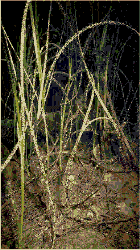|
|
|
|
WELCOME TO THE CHESAPEAKE BAY HOMEPAGE OF INFORMATION |
|
You are in the right place if your're looking for information on the Funding of our Bay and its Improvements', a brief overview of the Chesapeake Bay and its History, What's New and the latest Press Releases and News Items concerning our bay,
the Blue Channel Crabs, the varieties of Fish available in our bay, the varieties of Plant life existing in our bay and various sites to link onto for further information on these topics.
|
| ABOUT CHESAPEAKE BAY: | |
| TAKING THE BAY INTO THE 21st CENTURY: | |
| The Chesapeake Bay region is one of the fastest growing regions in the United States. In fact, several of the counties in the watershed are among the ten fastest growing counties in the nation.
The region's cultural activities, strong economic growth, accessibility, and unique natural environment are just a few of the reasons that the watershed is enjoying such a high rate of growth. The Chesapeake Bay Watershed's population now totals 14.2 million people and is predicted to grow to about 15 mllion
by the turn of the century. The Baltimore-Washington-Richmond corridor is experiencing unprecedented growth and development.
This exceptional growth presents localities with tremendous challenges, not the least of which is ensuring proper stewardship of the Chesapeake Bay.
County, municipal, and township governments are countering the effect of poor development patterns by strategically assessing their growth patterns, and creating comprehensive plans to promote better land use patterns for development, protect natural habitats, and revitalize existing development centers.
In addition, responsible land use decisions often take into consideration transportation policy, and farm preservation as a component of comprehensive plans. By encouraging wise resource management, these land use policies can contribute to improving the Chesapeake Bay.
 |
 |
The Chesapeake Bay Program, in partnership with the Alliance for the Chesapeake Bay, today announced a new grants program for 1998 designed to deliver funds directly to watershed-based citizen organizations and local governments for
environmental restoration and protection projects. The new Small Watershed Grants Program will award grants ranging from $2,000 to $40,000. Applicants may apply for funding for a wide range of projects from protecting fish habitat to restoring forest buffers to creating low-impact recreation sites. "This exciting new program will pump dollars into
communities for on-the-ground restoration projects to protect and restore our waterways," said Fran Flanigan, executive director for the Alliance for the Chesapeake Bay. "Every project, while directly benefiting the community, also will move us closer to restoring the Bay and its rivers." Applications are now available and proposals are due April 1.
Any nonprofit organization organized for the purpose of watershed protection, recreation, community improvement, or similar purposes or any local government located in the Bay watershed in Maryland, Virginia, Pennsylvania and the District of Columbia is eligible for funding. Interested organizations in the New York, West Virginia and Delaware portions
of the watershed are encouraged to partner with an organization in the other Bay jurisdictions. For more details or a Small Watersheds Grants |
| application packet, call the Alliance for the Chesapeake Bay at 410-377-6270 or access the Chesapeake Bay Program website at www.chesapeakebay.net/bayprogram. The Small Watersheds Grants Program continues the ongoing Bay
Program effort to "move upstream" into the Bay's tributaries. Preference will be given to on-the-ground projects that support Bay Program restoration goals such as reducing nutrient and toxic pollution, protecting habitat, restoring fisheries and promoting sustainable patterns of development. Funding for this 1998 program was made possible through the
U.S. Environmental Protection Agency and the Chesapeake Bay Program. The Alliance for the Chesapeake Bay, a regional nonprofit organization, will administer grants. The Alliance will work in conjunction with the Bay Program's Local Government Advisory Committee. The Chesapeake Bay Program is the cooperative partnership among Maryland, Pennsylvania,
Virginia; the District of Columbia; the Chesapeake Bay Commission, a tri-state legislative body; the U.S. Environmental Protection Agency, representing the federal government; and participating citizen advisory groups.
|
Land Use Management & Stewardship: |
| How Local Governments Can Help the Chesapeake Bay: |
|
The statutory authority to better manage land use, growth and development to minimize adverse impacts
to Bay tributaries and protect cultural/heritage resources is vested in local government. State and Federal partners are virtually dependent on local actions to secure the
benefits of better land use management. Beyond that of regulatory authority, local governments have a role in fostering a sense of land stewardship in their communities to
ensure a high quality of life for their citizens and sustain healthy streams, rivers and the Bay.

